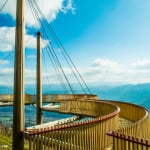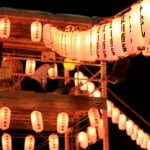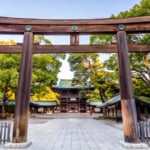Name: Taishō-ji Ruins at Tateta Natural Park
Address: 4-610 Kurokami, Kumamoto City, Kumamoto Prefecture
Official/Related Site URL: https://goo.gl/rZXJsh
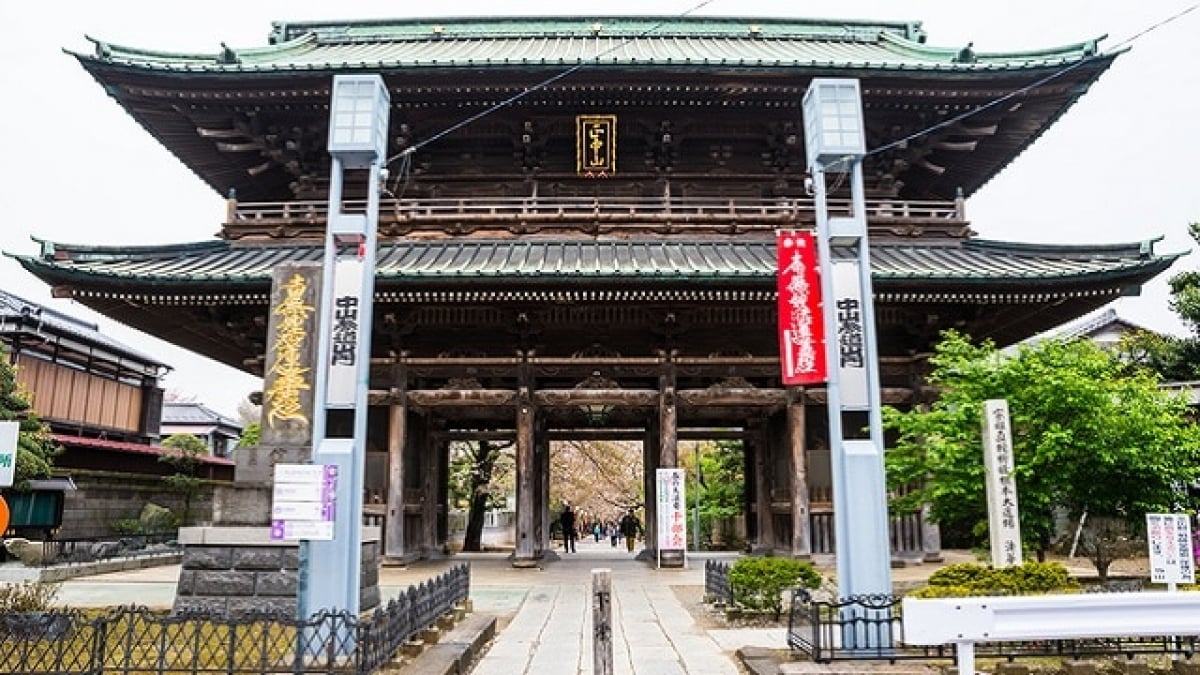
A Journey through History: 10 Spots in Kumamoto Where the Old Ways Live On
Kumamoto Prefecture is rich in historical and cultural heritage, with places all across the region that reflect the eras they thrived in. Each location preserves a piece of history and culture that you can only experience there. As interest in history grows among younger generations, exploring these historical sites might offer new perspectives on how today’s Japan was built on the struggles and achievements of those who came before.
Some of these historical gems may be places you’ve never heard of, while others, though easily overlooked, once played crucial roles in shaping history. Many are also hidden gems with few tourists, making them well worth a visit.
table of contents
[x] close
A Journey through History: 10 Spots in Kumamoto Where the Old Ways Live On
- 1. Taishō-ji Ruins at Tateta Natural Park
- 2. Tabaruzaka Park
- 3. Honmyō-ji: Passing On Kumamoto’s History
- 4. Suizenji Jojuen Garden: Site of the Hosokawa Clan Teahouse
- 5. Tsūjun Bridge: Edo-Era Cutting-Edge Flood Control
- 6. Yachiyoza Theater: A Meiji-Era Playhouse & Important Cultural Property
- 7. Manda Pit: A World Cultural Heritage Site Supporting Japan’s Industry
- 8. Fujisaki Hachimangū Shrine: Kumamoto’s Guardian of Over a Thousand Years
- 9. Misumi West Port (Kyūkō): A Retro Port Town Scene
- 10. Amakusa Shirō Memorial Hall: A Land of Many Legends
- ◎ Summary
1. Taishō-ji Ruins at Tateta Natural Park
The Taishō-ji Ruins at Tateta Natural Park, located not far from central Kumamoto City, preserve both the region’s history and natural environment. Some readers may already be familiar with the Christian daimyō (feudal lord) Tadaoki Hosokawa and his wife Gracia, who led the Higo Domain at the end of the Sengoku (Warring States) period. Though Tadaoki and Gracia now rest here in peace, their tumultuous lives have made them famous figures in Kumamoto. In addition to Tadaoki and Gracia, the mausoleum of the first Hosokawa lord (Fujitaka) and his wife is also located within the ruins of Taishō-ji. The old approach from the Bungo Kaidō highway still survives, and within the park you’ll find a moss garden and the Kyōshōken teahouse, remnants of the Edo period.
This site is popular with history buffs and those seeking quiet reflection, offering glimpses into the roots of Kumamoto’s historical legacy. Gazing at the tall cedar grove, you might feel transported back hundreds of years.
2. Tabaruzaka Park
In 1877 (Meiji 10), the Satsuma Rebellion (Seinan Sensō) broke out, an internal conflict led by the legendary figure Saigō Takamori. Tabaruzaka became the scene of one of its fiercest battles. Although the fighting spanned Kagoshima, Miyazaki, Ōita, and Kumamoto, it’s the intense struggles at Tabaruzaka, often depicted in films and TV dramas, that remain most famous.
Accounts suggest over 300,000 rounds of ammunition were fired in a single day, with at least 100 casualties among the government forces alone—evidence of how brutal the fighting was. Even today, strolling through Tabaruzaka Park can almost give you a sense that a Satsuma samurai might leap out from behind the trees. Within the park, the Tabaruzaka Park Museum preserves the story of the Satsuma Rebellion, showcasing numerous historical artifacts so visitors can learn more about that era.
These days, Tabaruzaka Park is also known for its spring cherry blossoms and lovely azaleas, making it a wonderful springtime destination.
Name: Tabaruzaka Park
Address: Toyoka, Ueki-machi, Kita-ku, Kumamoto City, Kumamoto Prefecture
Official/Related Site URL: https://goo.gl/ebNML1
3. Honmyō-ji: Passing On Kumamoto’s History
Legend has it that Honmyō-ji Temple was founded in 1585 (Tenshō 13) by Katō Kiyomasa to pray for his father’s spirit. In 1588 (Tenshō 16), it was relocated inside Kumamoto Castle, then in 1611 (Keichō 16) it moved to its current site following Kiyomasa’s death. Over its roughly 460-year history, it has survived two major fires. The expansive grounds feature the Niōmon Gate, a Treasure Hall, the Main Hall, and a bronze statue of Kiyomasa, among other highlights—an appealing spot for fans of both history and temple architecture. In recent years, it’s also been drawing more female visitors.
There’s a teahouse along the way for those who need a rest before tackling more steps. Passing through the middle gate, you’ll find the Treasure Hall to your right, containing valuable artifacts such as weapons and armor associated with Kiyomasa, Toyotomi Hideyoshi, and the Hosokawa clan—offering a deeper understanding of Kumamoto’s history. Various seasonal events take place at Honmyō-ji, so visiting during one of these celebrations is highly recommended.
Name: Honmyō-ji Temple (Rokujōmonryū Higo Honmyō-ji, Nichiren Sect)
Address: 4-13-1 Hanazono, Kumamoto City, Kumamoto Prefecture
Official/Related Site URL: http://www.honmyouji.jp/
4. Suizenji Jojuen Garden: Site of the Hosokawa Clan Teahouse
Suizenji Jojuen Garden traces its origins to Hosokawa Tadatoshi, the first lord of the Higo Hosokawa Domain, who built a teahouse here after seeing the abundant spring water while hawking. Under Hosokawa Tsunatoshi, the area was transformed into a large-scale strolling garden. During this period, many small pavilions were constructed for the lord’s frequent visits. However, in the era of Hosokawa Shigekata, most of the structures were removed, leaving only simple greenery and trees. Over time, different lords made improvements and changed the garden’s layout. In 1878 (Meiji 11), the Izumi Shrine was built, enshrining previous domain lords.
Even centuries later, the spring water continues to flow—just as lords of old once saw. Today, it remains beloved by locals as a historical site, a serene spot near downtown Kumamoto, and an integral part of Izumi Shrine’s precincts. Many tourists also stop by for a relaxing break during their Kumamoto sightseeing.
Name: Suizenji Jojuen (Suizenji Park)
Address: 8-1 Suizenji Koen, Chūō-ku, Kumamoto City, Kumamoto Prefecture
Official/Related Site URL: http://www.suizenji.or.jp/
5. Tsūjun Bridge: Edo-Era Cutting-Edge Flood Control
Located in Yamato Town, Kamimashiki District, Tsūjun Bridge is an arched aqueduct still in use for agricultural irrigation. Completed in 1854 (Ka’ei 7) to carry water to the Shiraito Plateau, the bridge spans 78 meters, is 6.8 meters wide, and stands about 20 meters at its highest point. Built by Higo stonemasons using advanced technology of the time, this remarkable structure is recognized as a national Important Cultural Property.
Besides its historical significance, Tsūjun Bridge is now a popular tourist spot—an adjacent roadside station attracts a steady stream of visitors. Occasionally, the bridge even releases a spectacular water discharge, creating a dramatic sight. Check the schedule before you go for a chance to witness it, along with the scenic rural surroundings of Kumamoto. (Note: Water discharge has been suspended since May 17, 2016, due to earthquake damage.)
Name: Tsūjun Bridge
Address: Jōbara, Yamato Town, Kamimashiki District, Kumamoto Prefecture
Official/Related Site URL: https://goo.gl/Fp61VL
6. Yachiyoza Theater: A Meiji-Era Playhouse & Important Cultural Property
The Yachiyoza Theater is a well-known symbol of Yamaga City, built in 1910 (Meiji 43). Local business owners pooled funds to construct this playhouse, which enjoyed booming success in its early years. It hosted everything from kabuki and modern plays to traditional Japanese music and Western classical concerts. Over time, attendance declined, and it closed in 1973 (Shōwa 48). The owners donated it to Yamaga City in 1980, and starting in 1986, a citizen-led fundraising campaign kicked off to restore Yachiyoza. In 1989, it reopened to the public, supported by numerous collaborations and donations. The first initiative was to re-roof the structure, attracting attention to the newly revived Yachiyoza.
On days with no kabuki or other performances, the theater is open for general tours, allowing visitors to soak in the atmosphere of Yamaga’s historic past. Beloved by locals, Yachiyoza continues to host various events and performances.
Name: Yachiyoza Theater
Address: 1-1 Yamaga, Yamaga City, Kumamoto Prefecture
Official/Related Site URL: http://yamaga.site/?page_id=4000
7. Manda Pit: A World Cultural Heritage Site Supporting Japan’s Industry
Manda Pit was part of the Miike Coal Mine facilities spanning Arao City in Kumamoto to Ōmuta in Fukuoka. During the late 19th century, two large-scale mining shafts were constructed, employing cutting-edge technology for coal extraction that helped power Japan’s Industrial Revolution.
As coal gave way to petroleum, the mine gradually declined; Miike Coal Mine officially ended coal extraction in 1951, and Manda Pit closed in 1997. Recognized as a national Important Cultural Property and Historic Site, it has been carefully preserved ever since. At the Tanakō (Tankō) Station, exhibits introduce Manda Pit’s history through photos and documents, providing valuable insights into Japan’s once-thriving coal industry.
Name: Manda Pit
Address: 200-2 Hara Manda, Arao City, Kumamoto Prefecture
Official/Related Site URL: https://goo.gl/t5g6hw
8. Fujisaki Hachimangū Shrine: Kumamoto’s Guardian of Over a Thousand Years
Fujisaki Hachimangū Shrine was reportedly founded in 935 (Jōhei 5) under the orders of Emperor Suzaku. Revered as the guardian deity of Kumamoto, it boasts a history spanning more than 1,080 years. Legend says imperial envoys buried three wisteria cuttings in three locations; one took root, leading to the name “Fujisaki Shrine.” Featuring impressive vermillion-lacquered buildings, the shrine’s complex includes the main hall, worship hall, tower gate, kagura hall, noh stage, corridors, and smaller shrines devoted to various deities.
A beloved landmark in Kumamoto, it attracts visitors from outside the prefecture too. Many stroll the grounds, exploring monuments and smaller shrines connected to famous local figures. During the regularly held Reitaisai (annual grand festival), the shrine hosts a grand parade—famous for its samurai procession and over 70 horses in attendance.
Name: Fujisaki Hachimangū
Address: 3-1 Ikawabuchi-machi, Chūō-ku, Kumamoto City, Kumamoto Prefecture
Official/Related Site URL: http://www.fujisakigu.or.jp/
9. Misumi West Port (Kyūkō): A Retro Port Town Scene
Located in Misumi, Uki City, Misumi West Port was completed in 1887 (Meiji 20) and stands out for its modern, Western-influenced design. It’s considered one of the three great Meiji-era ports—alongside major ports in Miyagi and Fukui Prefectures—and reportedly required over 130,000 stonemasons to build, underscoring its monumental scale.
When the port was completed, people from around the prefecture flocked to celebrate, filling inns and private homes in a massive demonstration of support.
In 2015, Misumi West Port was registered as part of the Sites of Japan’s Meiji Industrial Revolution, significantly increasing its tourist appeal. Historical buildings from that time have been preserved and are open to visitors, and now there’s a restaurant and souvenir shop. You can enjoy a lovely seaside view while dining on Western-style cuisine in a white-walled, storehouse-like eatery.
Name: Misumi West Port (Former Port)
Address: Misumiura, Misumi-machi, Uki City, Kumamoto Prefecture
Official/Related Site URL: http://www.city.uki.kumamoto.jp/q/list/389.html
10. Amakusa Shirō Memorial Hall: A Land of Many Legends
Kami-Amakusa City is believed to be the birthplace of Amakusa Shirō, the 16-year-old leader of the Shimabara Rebellion. The Amakusa Shirō Memorial Hall opened relatively recently and explores his life, as well as the local legends that remain about him. The Shimabara Rebellion was both a religious conflict and a peasant uprising; exhibits here discuss why Amakusa Shirō emerged as a leader and highlight anecdotes tied to his short but impactful life. Along with original documents of great historical value, the memorial hall’s unique architecture—a white structure perched on a hill—impresses visitors at first sight.
Inside, various exhibits are innovatively arranged with lighting and spatial effects, and multilingual audio guides are available—making it accessible for international guests. The dynamic visuals and sounds create an experience that even children can engage with. For anyone fascinated by Amakusa Shirō or Japanese history, this facility is well worth the trip.
Name: Amakusa Shirō Memorial Hall
Address: 977-1 Naka, Ōyano-machi, Kami-Amakusa City, Kumamoto Prefecture
Official/Related Site URL: https://goo.gl/ZeyzXc
◎ Summary
Kumamoto Prefecture retains many places that speak to its storied past—some preserving the vestiges of older eras, others holding on through documents and archives alone. In recent years, several have been recognized as World Cultural Heritage Sites, drawing greater interest. Local governments have also boosted tourism around these historical landmarks, and further development is likely on the horizon.
Standing on ground where pivotal events took place can deepen your appreciation for the motives and perseverance of those who came before. If you’re interested in experiencing their wisdom and passion, consider visiting these historic sites—each offers its own unique window into Kumamoto’s rich history.
RELATED ARTICLES
REGIONS
CATEGORIES
FEATURED ON Guide
-
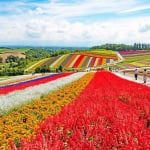
Where will you go for the summer vacation? Introducing recommended spots for domestic travel
-

Kaizu City’s Recommended 7 Tourist Spots. Enjoy the Culture and History Nurtured by Wajū!
-
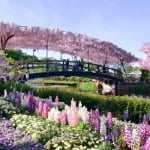
What Makes Ashikaga Flower Park So Special? A Treasure Trove of Photo-Worthy Spots!
-
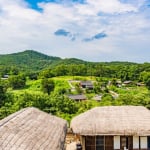
600 Years of Radiant Tradition: Korea’s Historic Villages of Hahoe and Yangdong
-

Two-Colored Seas and a Pink Beach! 4 Must-Visit Spots in North Eleuthera
MOST POPULAR ON Guide
-
 1
1Doha: Must-see Attractions in the Capital of Qatar
-
 2
2Toronto: 10 Things to do in this Picturesque Canadian City
-
 3
3Amarillo: A City Famous for It’s Amazing Canyons, Great History and Music
-
 4
4South Korea: Dazzling Scenery, Rich Culture and Fascinating History
-
 5
5Kuwait: A Country in Middle East Asia Famous for Hot Sand Dunes and Stunning Cityscape


